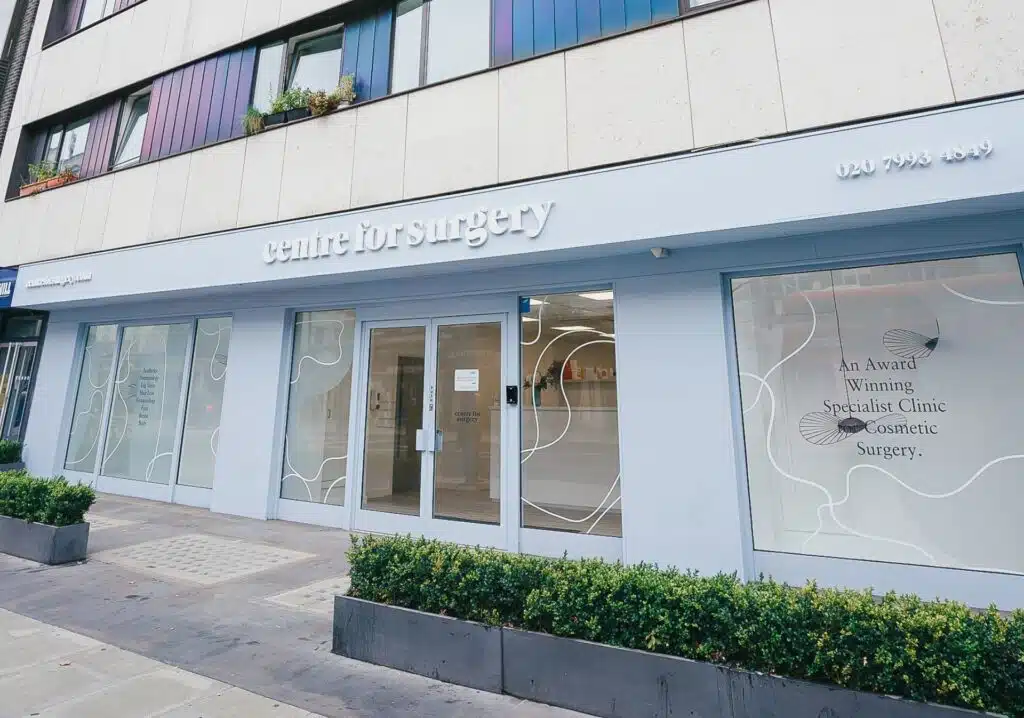Saggy breasts in women can be due to several causes, including childbirth and breastfeeding, the ageing process or significant fluctuations in weight. With time, women may notice that their previously perky breasts lose their fullness and end up developing sagging breasts. Fortunately, there is an excellent treatment for saggy breasts in the form of a breast lift, also known as mastopexy. The ideal result of breast uplift surgery is perkier and younger-looking breasts.
The breast lift procedure involves the removal of excess breast tissue and skin, followed by surgical repositioning of the breast tissue to create a tighter and more youthful-looking breast. Even with continued ageing, patients can expect the results from mastopexy surgery to be maintained for a long time, provided they maintain a stable weight.
What are the causes of breast sagging?
The natural ageing process most commonly causes sagging breasts. Over time, the skin begins to lose its natural tautness and elasticity, resulting in a wrinkled or saggy appearance. The breasts are not the only parts of the body that can be affected; other areas, such as the abdomen and thighs, may also develop significant skin laxity. Women who smoke may experience premature ageing, and this will accentuate the appearance of skin laxity or skin sagging.
Myths that claim to prevent sagging breasts
Women who have breasts that are larger than most women may be at risk of a significant degree of sagging, and this is primarily related to the heavier nature of the breasts in those women who have large breasts, and this will be accentuated by gravitational forces acting on the breast over time. The causes of breast sagginess include connective tissue disorders, which may lead to a reduction in collagen content in the skin, excessive sun exposure, hormonal deficiency, such as oestrogen and women who have a body mass index classified as obese. Obese women who then rapidly lose a significant amount of weight are at substantial risk of developing breast sagging.
Women who have given birth multiple times may also develop breast sagging, but breastfeeding in itself is not thought to be a recognised cause of sagging breasts.
When do breasts begin to sag?
Breast sagging can develop at any age and depends on several factors, including hereditary factors, where some women are genetically predisposed to developing saggy breasts more commonly than others. Women who smoke and drink heavily may be at high risk of developing breast sag. Women in their 40s can have youthful-looking, perky breasts, while women in their 20s may have a significant degree of sagging, and this is part of the typical spectrum of normality. An important factor that contributes to breast sagging is pregnancy, and multiple pregnancies may increase the severity of breast ptosis.
Can sagging breasts be prevented by wearing a bra?
There is no link between wearing bras and breast sagging. Many women do not wear bras and do not go on to develop sagging breasts. Our surgeons recommend that a well-fitting sports bra be used when undertaking strenuous exercise, as repetitive movements of the breast from certain activities, such as running, could be a possible cause of breast sagging.
What is the most effective treatment for sagging breasts?
Breast lift surgery is the most effective surgical treatment for treating sagging breasts, which leads to the restoration of firmness and a youthful-looking appearance.
There are four main types of breast lift surgery that are commonly carried out at Centre for Surgery in London, including:
- The crescent lift involves the removal of a crescent-shaped portion of skin from the upper part of the nipple to raise the position of the nipple by one to 2 cm.
- The circumareolar lift involves an incision around the full circumference of the areola to remove excess tissue and tighten the breast skin.
- The vertical scar breast lift, also known as a lollipop lift, involves an incision made around the full circumference of the areola, which then extends vertically downwards to the inferior breast crease. The lollipop lift is an effective technique for women with moderate to severe degrees of breast ptosis.
- The full breast lift, also known as an anchor lift, is used to correct severe degrees of breast ptosis or droopiness. The incision is made around the full circumference of the areola, with the vertical incision towards the inferior breast crease and an additional horizontal incision extending across the inner and outer aspects of the lower part of the breast. The incision is said to resemble the shape of an anchor and is a highly effective breast lift technique for women with severe degrees of breast sagging.
To determine the correct breast lift technique, we recommend a face-to-face consultation with our expert plastic surgeons for a comprehensive clinical assessment and a tailored treatment plan.
Is there a non-surgical method of treating saggy breasts?
There is no known effective non-surgical treatment to address saggy breasts. Once breasts develop sagginess, they do not return to their youthful, perkier shape without surgical treatment. Women may be recommended several exercises, including swimming, push-ups, and bench presses, which can strengthen the pectoralis muscle. This can improve posture and the overall tone of the chest wall, giving the impression of perky breasts. It is essential to note, however, that these methods do not yield instantaneous results, and any improvement is only mild at best.
Adhering to a healthy lifestyle, including maintaining a healthy weight, avoiding smoking, and eating sensibly, can help prevent the formation of saggy breasts. Women who exercise regularly and avoid significant weight fluctuations can help maintain good skin elasticity, preventing the onset of breast sagging. A personal trainer can recommend certain chest muscle exercise routines that can strengthen this area and improve the breasts’ appearance. Once breast sagging has developed, the only effective treatment is breast uplift surgery.










